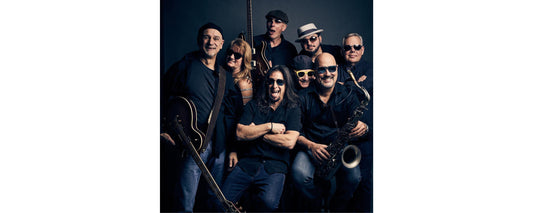It’s been several years since the Amistad’s masts last towered above her old home port at Long Wharf. Now the historic ship is back, and New Haveners are invited to climb aboard this Saturday during an event that will include speeches, entertainment and dockside education. “I think it will be kind of a great welcome home,” says Paula Mann-Agnew, executive director of the organization Discovering Amistad, which now owns and operates the ship.
A two-masted Baltimore schooner, the Amistad is a reproduction of the vessel that famously arrived in New Haven in 1839, bearing a group of Sierra Leonean slaves who had taken control of it by force. En route from Havana to a Cuban sugar plantation, the slaves, led by Mende chief Sengbe Pieh, broke free of their shackles, killed the captain and the cook and ordered the two Cuban plantation owners on board to sail the ship to Africa. Instead, they tacked up the coast of North America, where the Amistad was eventually intercepted by the U.S. Navy. The Africans were charged with murder and imprisoned in New Haven, but with the help of local and other abolitionists, their case eventually made its way to the Supreme Court, where former president John Quincy Adams represented them, and they won their freedom. A year later, the surviving captives returned home to Sierra Leone.
sponsored by
Today, Discovering Amistad runs school and adult educational programs on the Amistad’s history and its implications for today’s world. A previous organization with a similar mission, Amistad America, was financially mismanaged and taken into receivership by the state in 2014. Under its new leadership, the Amistad underwent an extensive renovation at Mystic Seaport, where it had been built in the late ’90s, to make it seaworthy again. Programs were relaunched, and when COVID hit, they moved online. The ship’s return to the water began with a monthlong stop in Hartford in September, which drew more than 1,000 visitors and 1,500 students from five school districts.
“Of course, it’s a beautiful ship, and so much of the history is rooted right here in Connecticut, so people are attached
Today’s vessel differs in several ways from its namesake, says interpreter Bruce Trammell, Sr. Armed with GPS and two diesel engines, the ship doesn’t have to rely solely on sail power to navigate the waters of the Quinnipiac River or Long Island Sound. Instead of soft wood better suited to the Caribbean, the reproduction is made from hardier Douglas fir, with a keel fashioned of South American “purpleheart” hardwood. A two-handled steering mechanism was replaced with a wheel. The ship is also slightly longer, wider and heavier in order to allow it to sail in the open ocean. In 2007, it made a trip to Sierra Leone, homeland of the Mende captives.
Later this month, the Amistad, whose colorful flags spell its name using the nautical flag alphabet, will sail back to Mystic, where it will host a few more programs before being “wrapped” for the winter. But Mann-Agnew hopes that come spring, the ship will be able to take visitors on actual sails again. In the meantime, stepping on board gives visitors the opportunity to step into history—and to think more about their own world, Mann-Agnew says. “Every time we dock the ship, it’s another opportunity to have dialogue.”
The Amistad
Long Wharf Pier – Long Wharf Dr, New Haven (map)
Visit on: Oct 9-10, 1-4pm; Oct 14-15, 3:30-5pm
(203) 498-8222
www.discoveringamistad.org
Written and photographed by Kathy Leonard Czepiel. Image two features Bruce Trammell, Sr.








